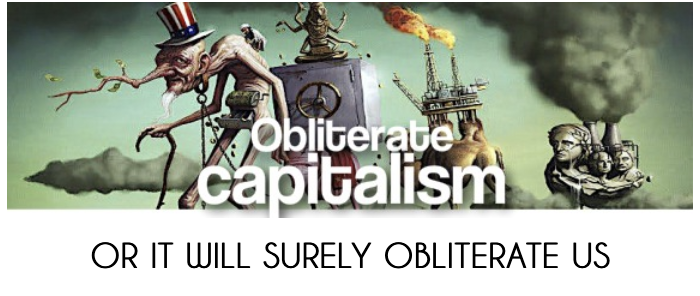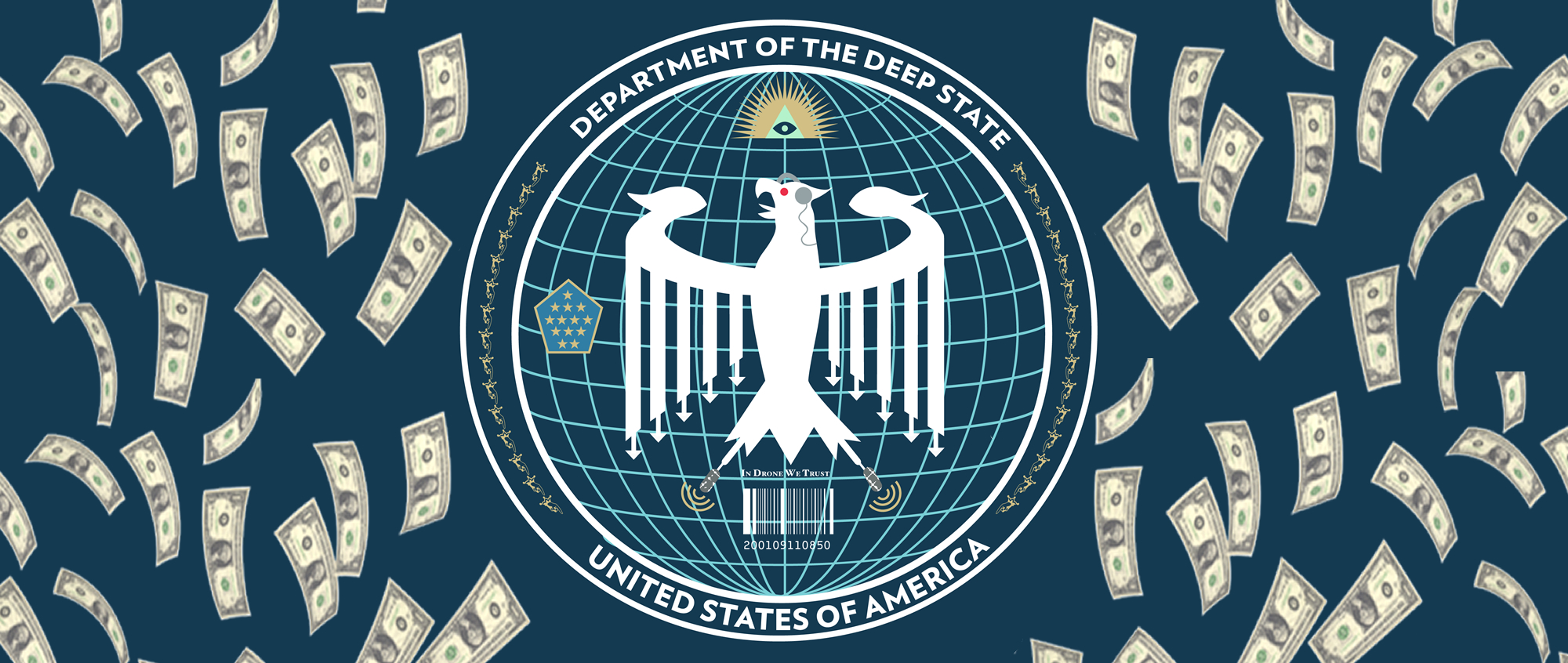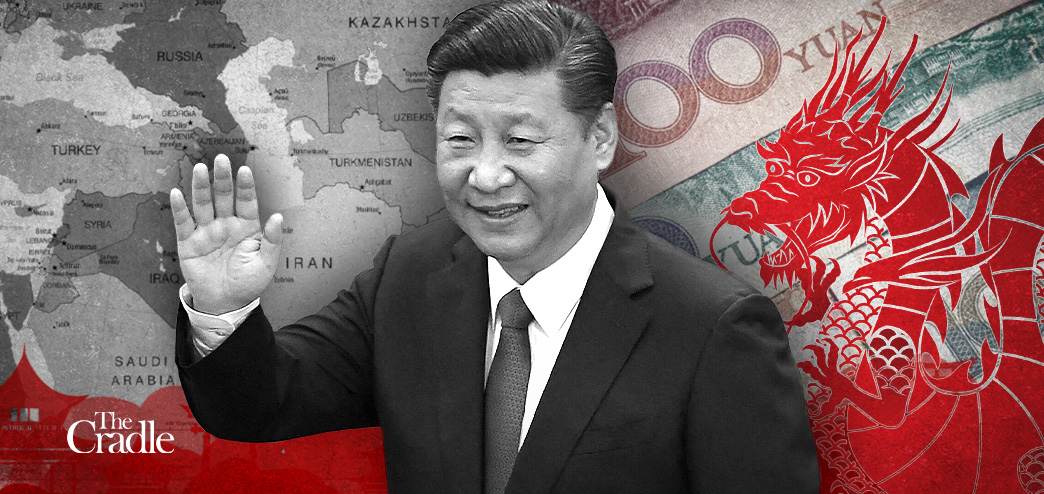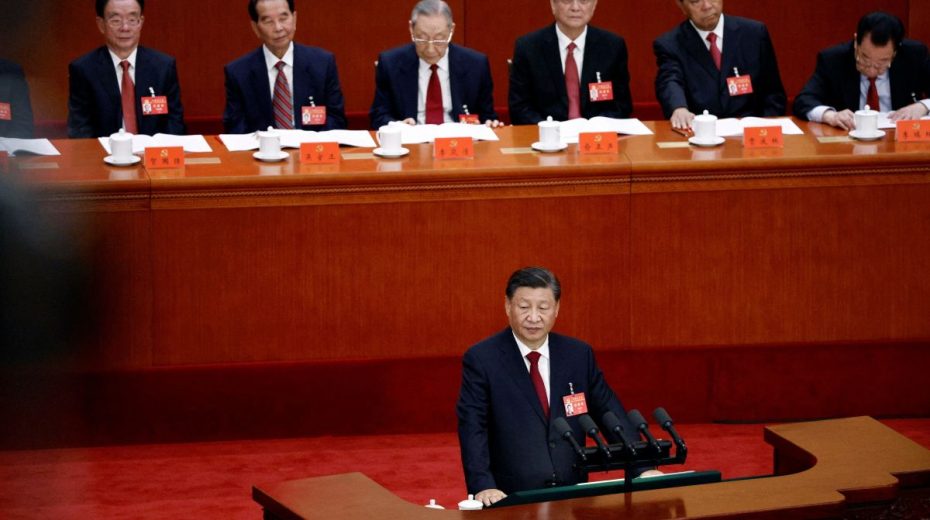Did you sign up yet for our FREE bulletin?

This work is licensed under a Creative Commons Attribution-NonCommercial 4.0 International License
ALL CAPTIONS AND PULL QUOTES BY THE EDITORS NOT THE AUTHORS
Please make sure these dispatches reach as many readers as possible. Share with kin, friends and workmates and ask them to do likewise.
The plan by the U.S. Government to add Taiwan to its empire has already been made public by U.S. military officials (who will be quoted extensively below here); and, as announced, it builds upon these two models:
1. the U.S. Government’s determination to outlast Russia’s Government in the Ukrainian war and to use that example — winning against Russia — in order to solidify and grow the U.S. regime’s alliances with (the vassalages of) other major maritime nations, so that those other maritime nations will join America’s war to consume Taiwan, just as Britain still consumes the Falklands. (Both the Falklands and Taiwan are islands claimed by a [U.S./UK] ‘enemy’ [Argentina or China] as being its territory.) America therefore must first defeat Russia, before it defeats China — and, then, it will control the world; and the U.N. will be nothing more than a virtue-signaling international talking-forum, nothing of a setter of international laws, which will instead be replaced by America’s own “rules-based international order.” Global rule by the U.S./UK empire is the ultimate objective. (Supporters of this objective are commonly called “neoconservatives,” which is an international-affairs ideology that all of the leaders and public officials in all political Parties in both the UK and the U.S. support, and it is sometimes referred to as “the Special Relationship” — see this, and especially this — between the U.S. and the UK, to control, ultimately, the entire world.)
2. the example of UK’s success in the 1982 Falklands War, which gave Britain control over the Falkland Islands, so that, as Wikipedia says, “In 1994, Argentina adopted a new constitution,[7] which declared the Falkland Islands as part of one of its provinces by law.[8] However, the islands continue to operate as a self-governing British Overseas Territory.[9]” In other words: the U.S./UK regime plans for Taiwan “to continue to operate as a self-governing U.S. overseas territory.” (UK will thus regain control over China, by using the U.S., exactly in the way that Cecil Rhodes had drawn up in 1877 and carried through by the terms of his will setting up the Rhodes Trust in 1902, with Winston Churchill being a key part of the operation during subsequent decades.)
Here are the details, the whole plan (to conquer both Russia and China), as described by American military planners:
1. On 10 November 2022, the South China Morning Post bannered “Top US general vows military support for Taiwan, warns Beijing against conflict”, and reported:
A top US military officer pledged to support Taiwan militarily while warning Beijing to learn from Russia's invasion of Ukraine.
The remarks were made by General Mark Milley, chairman of the Joint Chiefs of Staff, during an event in New York on Wednesday.
"The US is committed through the Taiwan Relations Act, and President Biden has said on many occasions recently that the United States will continue to support Taiwan," Milley said.
"We will support them militarily ... We would try to help train them and equip them.” ...
"A lesson that comes out of Ukraine for China is that war on paper and real war are two different things. And what they have seen was a tremendous strategic miscalculation," he said.
"I think President Xi is taking a step back and ... he's evaluating the situation."
Milley said it would be hard for Beijing to carry out an amphibious attack across the Taiwan Strait.
"That's really difficult," he said. "It's really hard. And I think they're coming to realise that and they're probably evaluating the situation and recalculating what they might do."
The 1979 Taiwan Relations Act, which governs US ties with Taipei, requires the United States to ensure the self-ruled island has the resources for self-defence and to prevent any unilateral change of status by Beijing. But it does not require the US to defend the island militarily. ...
Xi told the congress that the PLA should reach its target of becoming a world-class military capable of winning "regional wars".
Milley said China wanted to achieve global military superiority by the middle of the century and regional superiority by 2027.
2. On 1 October 2022, the U.S. Naval Institute Magazine (or “Proceedings”) headlined “Prepare the Logistics to Break a Chinese Blockade of Taiwan: If China attempts a quarantine of Taiwan, the United States and its allies must be prepared to quickly deploy merchant shipping.” It said:
U.S. shipping will be vital to ensuring Taiwan retains access to the global logistics supply chain and matériel. Unfortunately, the U.S. merchant fleet is a shadow of its World War II zenith. Globalization and the complexity of global supply chains have eroded the reach of U.S. merchant shipping; just 125 U.S. naval supply ships currently are in service and some 140 U.S.-flagged merchant ships globally.1
Luckily, there are historical blueprints for achieving success in either scenario: Great Britain’s Ships Taken Up from Trade (STUFT) of Falklands War fame and Operation Earnest Will from the Gulf War each illuminates a path for the United States to quickly generate and protect a naval logistics enterprise. These events are ripe with lessons that should be considered as the United States marshals resources for a potential conflict in the Indo-Pacific.
STUFT
The Falklands War is frequently held up as an example of what a modern, “missile age” naval conflict might look like. One often-studied aspect of the conflict is the herculean logistics enterprise that sustained a carrier strike group at the ends of the earth for 74 days. STUFT was the key legal mechanism employed by the Admiralty to requisition British-flagged ships for government use to move men, matériel, and stores to the theater of operations. From luxury liners converted to troop carriers to fishing trawlers converted to submarine hunters, 47 British commercial vessels were activated at the behest of the First Sea Lord Admiral Sir Henry Leach, who stated simply, “Man and support the Fleet. Money is no object.”2
When Great Britain emerged victorious from the Falklands conflict, the fusion of military and commerce was cited as a critical enabler of a victory more than 8,000 miles away and some 3,500 miles from the nearest friendly port. Though the Admiralty was able to retrofit and get its fleet of STUFT sailors underway mere weeks after hostilities began, its legal authority was rooted in three major factors.
First, the “Royal Prerogative,” the loosely defined residual powers of the Crown, held by the king or queen and delegated to the executive arms, gave the government the power to requisition ships. This authority dates to as early as 1138 CE.3 Second, the 1907 Hague Convention (VII) outlined policy governing how nations may convert merchant ships to warships. …
Last, a six-part criteria governing a merchant ship’s transition to combatant was met that allowed the vessels to retain the privileges of a warship, including mandates governing flag state, crewing, and adherence to the laws of war.4
These measures allowed the Admiralty to convert commercial ships to lawful combatants and scale its transport fleet in just seven weeks, birthing the logistical enterprise necessary to win a war on the other side of the planet.
Operation Earnest Will
If the Falklands War offers a template for how the United States could assemble a commercial-military fleet, Operation Earnest Will demonstrates why one may be necessary. …
In post-conflict arbitration of the Falklands War, Argentina levied several complaints of improper behavior at Britain. The British cruise liner Queen Elizabeth II, employed as a troop transport, was cited for improperly flying noncombatant flags when, as a warship under Hague conventions, she could have been subject to lawful attack from Argentinian forces.7
While Argentina may only have been able to take issue with elements of STUFT’s legal credibility following the cessation of hostilities, China undoubtedly would not make the same mistake. Given China’s access to global media outlets and international governance mechanisms such as the United Nations, one can assume that a major international effort led by the United States to build a blockade-breaking merchant fleet would face myriad attempts at sabotage, destruction, and delegitimization well before hoisting colors. ...
If the United States and its allies attempt to undermine a quarantine of Taiwan, they will need to be aware they will be repudiating a competitor whose credibility, at home and abroad, relies on the success of the operation. A logistics mission of this nature cannot singlehandedly end such a conflict, but it can serve as a basis for de-escalation, giving ample breathing room for diplomatic negotiations before a strained geopolitical situation boils over into open conflict. Therefore, such an operation cannot be intended purely for stability’s sake. It will need to be scoped and prepared for with the realistic expectation that unless diplomacy or other international pressures external to the actual operation defuse the situation, the situation likely will escalate into open hostilities.
Current Sea State
The Falklands War and Operation Earnest Will present two examples of a modern, mass mobilization of merchant fleets to augment the military. For a presumed conflict in the Indo-Pacific, this military-civil fusion will have to take place on a much larger scale. ...
Recommendations
Given the insufficiency of the U.S. maritime logistics apparatus, recapitalization alone will not meet the demands of a future conflict. In austere budget environments, bold spending to address the gap in logistics capability is unlikely. Further, given the intractable nature of Jones Act reform, it is unrealistic to assume the legislation could be altered on a timeline necessary to meet the moment. To address the gap between U.S. logistics capabilities and needs, low-cost, high-yield solutions must be emphasized. Given these considerations, the United States should take a two-pronged approach. ...
This is a score on which the United States and its allies have already made considerable progress. Of the Quad nations, Australia and India have begun using variants of the MH-60 Seahawk helicopter, and Japan has announced intentions to use F-35 variants for carrier aviation. While these efforts are not a panacea for interoperability, it is clear the technical capacity for such measures exists. Fortunately, measures to ensure interoperability are firmly at the Department of Defense level and only require strong communication with counterparts and modest investments to realize them, not vast expenditures or mobilizing enormous fleets.
Reflagging operations. The United States must secure a series of flag-state agreements with commercial carriers and their host nations to protect commercial shipping in the event of a Chinese quarantine or open hostilities and provide credible deterrence against further escalation. The United States needs a system to rapidly acquire scalable tonnage. Fortunately, it has a proven template for executing such an endeavor. The Maritime Security Program (MSP), administered by MarAd, is a public-private partnership that allows the U.S. government to effectively “charter” U.S.-flagged ships with U.S. crews to execute maritime logistics for military operations. Notably, MSP vessels have carried 99 percent of cargoes destined for Afghanistan and Iraq since 2009. The program is currently congressionally capped at 60 vessels, despite efforts to expand capacity.8
Given the gaps in the U.S. commercial fleet’s tonnage, the solution for fielding a scalable logistics solution in such a conflict must come from allies. Such a solution would take features of STUFT, Operation Earnest Will, and the MSP program to rapidly generate sealift capacity.
First, the United States must research and establish a short list of candidate nations. Criteria should include the extent of their trade relationship with Taiwan, volume of shipping tonnage available, and likelihood of their support of assertive operations to counter Chinese hostilities. Several regions offer opportunities, such as Southeast Asia, Europe, Africa, and Latin America. By offering modest subsidies and a planning framework to allies from these areas, the United States could lay the groundwork for deploying a large fleet of allied shipping—flagged, crewed, operated by partners in a broader effort to check Chinese aggression and protected by the laws of armed conflict and U.S. naval power.
Two key considerations should be factored into this calculus. First, ensuring that the companies involved are not underwritten by Chinese investment banks—as of 2018, 3 of the top 15 shipping portfolios, including 2 of the top 5, were held by Chinese banks.7 Further, ensuring that the ships are not crewed by hostile nationalities—in this case, Chinese. Fortunately, as the commercial shipping industry is crewed in large part by Filipino and Indian sailors, this is a secondary consideration.
The scenario in which conflict breaks out is admittedly more complicated. Given the number of Chinese shipping firms and their dominance in world shipping volume, if a conflict were to break out, world maritime shipping would likely bifurcate. Countries that have demonstrated interest in a “Free and Open” Indo-Pacific, such as Germany, France, and Great Britain, likely would side with the United States in such a scenario. These countries, when combined with Nordic shipping companies, have competitive domestic shipping industries that, combined, rival Chinese preeminence in terms of tonnage and dollars invested.
Is there any mystery regarding “Why does the U.S. Government support nazis all around the world?” The U.S. Government (starting on 25 July 1945) continued on from where Germany’s Nazi Government left off — and has been far more successful at it than Hitler’s Government was.
About the author  Investigative historian Eric Zuesse Investigative historian Eric Zuesse’s new book, AMERICA’S EMPIRE OF EVIL: Hitler’s Posthumous Victory, and Why the Social Sciences Need to Change, is about how America took over the world after World War II in order to enslave it to U.S.-and-allied billionaires. Their cartels extract the world’s wealth by control of not only their ‘news’ media but the social ‘sciences’ — duping the public.
Print this article
The views expressed herein are solely those of the author and may or may not reflect those of The Greanville Post. However, we do think they are important enough to be transmitted to a wider audience.

Unfortunately, most people take this site for granted.
DONATIONS HAVE ALMOST DRIED UP…
PLEASE send what you can today!
JUST USE THE BUTTON BELOW

Did you sign up yet for our FREE bulletin?

This work is licensed under a Creative Commons Attribution-NonCommercial 4.0 International License
ALL CAPTIONS AND PULL QUOTES BY THE EDITORS NOT THE AUTHORS
Please make sure these dispatches reach as many readers as possible. Share with kin, friends and workmates and ask them to do likewise.

John Rachel interviews Finian Cunningham
"What about if Americans in greater numbers boycotted elections with the explicit reason being that they don’t recognize the process? I mean total boycott...."
Finian Cunningham Interview: An Objective Look at U.S. Foreign Policy
Events continue to unfold at a quickening pace. Facing an alarming escalation in tensions around the world, we asked Finian Cunningham for his current thoughts.
 Finian Cunningham has written extensively on international affairs, with articles published in several languages. He is a Master’s graduate in Agricultural Chemistry and worked as a scientific editor for the Royal Society of Chemistry, Cambridge, England, before pursuing a career in newspaper journalism. He is also a musician and songwriter. For nearly 20 years, he worked as an editor and writer in major news media organizations, including The Mirror, Irish Times and Independent. Second-time recipient of the Serena Shim Award for Uncompromising Integrity in Journalism (December 2020). His prolific output of excellent political analysis and commentary can be accessed at Strategic Culture Foundation, Sputnik News, and RT. Finian Cunningham has written extensively on international affairs, with articles published in several languages. He is a Master’s graduate in Agricultural Chemistry and worked as a scientific editor for the Royal Society of Chemistry, Cambridge, England, before pursuing a career in newspaper journalism. He is also a musician and songwriter. For nearly 20 years, he worked as an editor and writer in major news media organizations, including The Mirror, Irish Times and Independent. Second-time recipient of the Serena Shim Award for Uncompromising Integrity in Journalism (December 2020). His prolific output of excellent political analysis and commentary can be accessed at Strategic Culture Foundation, Sputnik News, and RT.
We focus on the realities of the international power struggle unfolding in real time, specifically addressing the role of the U.S. in the tensions and its capacity to reduce them. We are looking for paradigm-shift ideas for improving the prospects for peace. His responses below of are exactly as he provided. Here is what Finian had to say.
Q. We hear a lot of terms and acronyms bandied about. ‘Deep State’ … ‘MIC’ … ‘FIRE sector’ … ‘ruling elite’ … ‘oligarchy’ … ‘neocons’. Who actually defines and sets America’s geopolitical priorities and determines our foreign policy? Not “officially”. Not constitutionally. But de facto.
FC: All of the above terms can be used interchangeably to convey different facets of the power structure in the United States, and other nations. The ruling class comprises primarily corporate and financial interests of Wall Street and the military-industrial complex as well as combines of accumulated wealth. This nexus of power is nothing mysterious. It is the apex of the political and economic power of a social minority – the 1% is another term – that is the norm for capitalist society, as is explained in conventional class analysis. Writers like Michael Parenti and the late William Blum, among others, have described it well. The term “deep state” is a useful one because it conveys the continuity of power and powerful interests that remain entrenched regardless of which political party or personage is in the presidential or congressional office. The politicians do the bidding of the ruling class to serve their economic and political interests. This condition of permanent entrenched power accounts for why policies change little from one administration to another, whether Democrat or Republican. That’s why foreign policies change little, if at all. The unspoken foreign policy of the US is to serve the imperialist interests of its ruling class (Wall Street banks, commodity multinationals, overseas investors) and to maximize militarism for the financial benefit of the big and ancillary corporations that comprise the military-industrial complex.
The political party labels are irrelevant. The ship of state is charted for a collision course with perceived global rivals. Those rivals are of course portrayed as “enemies” and “threats”. That narrative or propaganda is required to “justify” (legitimize) the policy of antagonism and militarism, which is essentially a criminal warmongering policy.
For example, if we look back over the last decade from the Obama administration, through Trump to the present Biden one, there is fundamentally no difference in foreign policy. Even though we went from Democrat to Republican back to Democrat and despite differences in presidential personalities. Obama launched the “Pivot to Asia” with its keynote policy of antagonizing China. Obama also unleashed the policy of confrontation with Russia. Of course, Obama didn’t originate these policies. The antagonism towards perceived geopolitical rivals goes back decades to the Cold War. But certainly under Obama, there seemed to have been a step-change in pursuing more conflict with China and Russia. From Obama through Trump to Biden, the foreign policy of aggression has not only continued but has also been intensified. This is an illustration of the “deep state” at work. The objective of the ruling class's interests is to confront China and Russia in order to project US imperial power or hegemonic ambitions of global dominance for the capitalist advantages of its de facto governing corporate structure. The political party labels are irrelevant. The ship of state is charted for a collision course with perceived global rivals. Those rivals are of course portrayed as “enemies” and “threats”. That narrative or propaganda is required to “justify” (legitimize) the policy of antagonism and militarism, which is essentially a criminal warmongering policy. This, in my view, explains why the United States aided and abetted by subordinate “allies” are drumming up war with China over Taiwan and with Russia over Ukraine. The collision course is set by the ruling class in accordance with their interests, not by the majority of American citizens. This speaks of the fundamentally undemocratic nature of the US and its allies. More accurately, the US and its Western vassal states are acting like fascist powers because the policies are fixed by corporate power and reinforced with immense militarism. There is no democratic accounting for the war fixation. Citizens are held hostage by the warmongering deep state.
Q. We’ve had decades of international tensions. Recent developments have seen a sharp escalation in the potential for a major war. The U.S. apparently cannot be at peace. “Threats” against the homeland are allegedly increasing in number and severity. The trajectory of our relations with the rest of the world appears to be more confrontations, more enemies, more crises, and more wars. <> Is the world really that full of aggressors, bad actors, ruthless opponents? Or is there something in our own policies and attitudes toward other countries which put us at odds with them, thus making war inevitable and peace impossible?
FC: The United States in its capitalist formation as described above needs conflict and ultimately war like a drug addict needs a narcotic fix. The US cannot function without militarism because of the nature of its corporate capitalist economy and in particular the dominance of the military-industrial complex. The US economy is a hyper-militarized one befitting a fascist state. In order to justify this totally abnormal and undemocratic functioning, which is also criminal by the way, then there is the imperative need for a propaganda cover of legitimizing narrative about “enemies and threats”. This illusory narrative is dutifully sustained by the corporate-controlled media which reinforces, and never questions, nostrums about “foreign enemies” and “foreign threats”.
China, for example, is continually portrayed as a national security threat, an expansionist power and a threat to Taiwan in particular. The US claims to “defend” Taiwan from a Chinese threat. Under international law and US own domestic law, China has sovereignty over Taiwan in what is known as the One China Policy. Since Obama, through Trump and Biden, the US has increased sales of strategic weapons to Taiwan. This so-called US policy of “strategic ambiguity” is really more accurately called the “strategic destabilization” of China with the aim to antagonize Beijing. Beijing has repeatedly said it aspires to peaceful reunification with the island of Taiwan, but Washington relentlessly militarizes the situation by massively arming Taiwan, inciting separatist politics and inciting Beijing to react with military measures, which arguably are a legitimate response to defend its sovereignty. Can you imagine if the shoe was on the other foot?
This week, the United States’s government-funded organization the National Endowment for Democracy (NED) is organizing a “world democracy summit” in Taiwan (Oct 25-27). (See this article https://strategic-culture.org/news/2022/10/25/western-media-smear-president-xi-aggressive-china-as-cia-front-holds-secessionist-summit-in-taiwan/)
The summit called for a challenge to “authoritarian regimes”. In other words, a CIA front organization (NED) is fomenting sedition and secession on Chinese sovereign territory. And yet in the US media, this week all we heard about were unsubstantiated warnings that Chinese President Xi Jinping is going to take China in a more aggressive direction over the next five years of his third term in office.
Meanwhile the Chinese foreign ministry this week urged the United States to stop demonizing China as a global threat and for Washington to work together in a mutual partnership for world development and peace. So it is clear who the aggressor is here.
In relation to Russia, in the months before the war in Ukraine blew up in February this year, Moscow had set out a detailed proposal for a comprehensive security treaty in Europe. The proposed treaty called on the US-led NATO military bloc to stop expanding eastwards towards Russia’s borders, as it has done relentlessly since the supposed end of the Cold War in 1991 following the collapse of the Soviet Union. Moscow’s security treaty proposals were simply trashed by the United States. No negotiations were conceivable for Washington. It insisted on NATO expansion and the “right” to continue arming a radical anti-Russian regime in Ukraine which Washington has bankrolled with weapons and military trainers since the CIA-backed coup in Kiev in 2014. That US deep state policy of antagonism, militarism, and aggression (regardless of who is in the White House) has led to the current war in Ukraine with Russia which the US and its NATO allies are doing everything to escalate, even if it runs the risk of a nuclear cataclysm.
As with Taiwan and China, the United States is on a fixed course of confrontation with Russia using Ukraine as the conduit. It is blatantly obvious who the aggressor is. And it should be blatantly obvious that the motive for this aggression is the paramount need to keep the US capitalist economy and its fascist power structure functioning through hyper-militarism.
Q. Our leaders relentlessly talk about our “national interests” and our “national security”, warning that both are under constant assault. Yet, we spend more than the next nine countries combined on our military. Why does such colossal spending never seem to be enough?
FC: Because American capitalism is a war-driven economy. The military-industrial complex is so embedded and prevalent that US capitalism would not function without conflict, tensions, and ultimately war. No other nation comes close to the warmongering record of the United States. Five years after World War II, it was bombing millions of Korean civilians to death. William Blum puts the number of wars and conflicts the US has engaged in since World War II at dozens and scores. What for? To “defend democracy and law and order?” How ridiculous and obscene! The entire power structure of the US would collapse without war – or its latent version of tensions and conflict with “foreign enemies”. That power structure equates to deadly serious vested interests. It’s what President Eisenhower warned about in 1961 and two years later his successor John F Kennedy was assassinated because he threatened the militaristic power structure from growing peace talks with the Soviet Union. JFK’s assassination – a president’s head blown off in broad daylight during a motorcade watched by millions of citizens – is perhaps the single most horrific example of the fascist deep state made manifest, which is the brutal, sickening reality beneath the patina of “American democracy”.
Q. It’s evident that you, and the many individuals who follow you and support your work, believe that America’s direction in both the diplomatic sphere and in the current conflict zones represents exercise of government power gone awry. Can you paint for us in broad strokes the specific changes in our national priorities and policies you view as necessary for the U.S. to peacefully coexist with other nations, at the same time keeping us safe from malicious attacks on our security and rightful place in the world community?
FC: The United States needs to be democratized. Its power structure and economy need to be demilitarized and made to work for the benefit of the majority of citizens. In short, I believe a socialist society is the best solution. But the fight for genuine democracy and peace comes with a hard struggle because of the vested interests of the status quo. However, with the evident collapse of US capitalist society (and other Western states), the task is being made more necessary and in some ways easier because it is becoming starkly evident that the existing system is bankrupt, corrupt, criminal, and unsustainable for the majority of working people – who really do want peaceful societies and peaceful international coexistence.
I believe that peaceful international relations with China, Russia and the United States and other nations are very possible. The primary threat to our human existence comes from the United States under its prevailing system. If that system can be transformed into a peaceful, democratic, socialist economy by a mass movement of Americans then the world will be likewise transformed. The key is the demilitarization of the US requiring a social change that goes way beyond its present oligarchic capitalist system. That is the biggest historic challenge the whole world wants to see being achieved. It won’t happen unless American citizens get organized politically. If they don’t then a world war is in danger of happening. If a war happens, and the planet survives it, then the best we can hope for is the defeat of the US deep state and an opening for democratic transformation by the American citizens. The peaceful option is of course desired but the US oligarchy is making violence almost inevitable.
Q. The general public, especially when it’s aware of the self-sabotaging results of our current foreign policies and military posturing, clearly wants less war and militarism, preferring more peaceful alternatives on the world stage and greater concentration on solving the problems at home. As peace activists, we are thus more in line with the majority of citizens on issues of war and peace, than those currently in power.
What happens if we determine that those shaping current U.S. policy don’t care what the citizenry thinks, are simply not listening to us? What if we conclude that our Congress, for example, is completely deaf to the voice of the people? What do we do? What are our options then? What are the next concrete steps for political activists working toward a peaceful future?
FC: What about if Americans in greater numbers boycotted elections with the explicit reason being that they don’t recognize the process? I mean total boycott. And for the citizens to be organized and conscious about what their objectives are: they will only engage with politics, voting, and form-filling, when a party is on the ballot sheets that genuinely represents their class needs as workers and aspirations for peaceful foreign relations. Maybe Americans should go on strike and bring the system to a crash. And the same goes for Europeans, by the way.

• • •
We are grateful to Finian Cunningham for sharing his valuable and thought-provoking views. The interview was arranged by John Rachel, Director of the Peace Dividend Project. The Peace Dividend strategy is not a meme or a bumper sticker. It is an end-to-end methodology for challenging the political establishment and removing from power those compromised individuals who work against the interests of the great majority of U.S. citizens. The only hope for our hyper-militarized nation is each and every one of us having a decisive voice in determining the future we want for ourselves and our children.
Print this article

an>[/su_animate]
Unfortunately, most people take this site for granted.
DONATIONS HAVE ALMOST DRIED UP...
PLEASE send what you can today!
JUST USE THE BUTTON BELOW




[premium_newsticker id=”211406″]
 This work is licensed under a Creative Commons Attribution-NonCommercial 4.0 International License This work is licensed under a Creative Commons Attribution-NonCommercial 4.0 International License
ALL CAPTIONS AND PULL QUOTES BY THE EDITORS NOT THE AUTHORS
Read it in your language • Lealo en su idioma • Lisez-le dans votre langue • Lies es in Deiner Sprache • Прочитайте это на вашем языке • 用你的语言阅读


 Keep truth and free speech alive by supporting this site. Keep truth and free speech alive by supporting this site.
Donate using the button below, or by scanning our QR code.
Please make sure these dispatches reach as many readers as possible. Share with kin, friends and workmates and ask them to do likewise. | |















